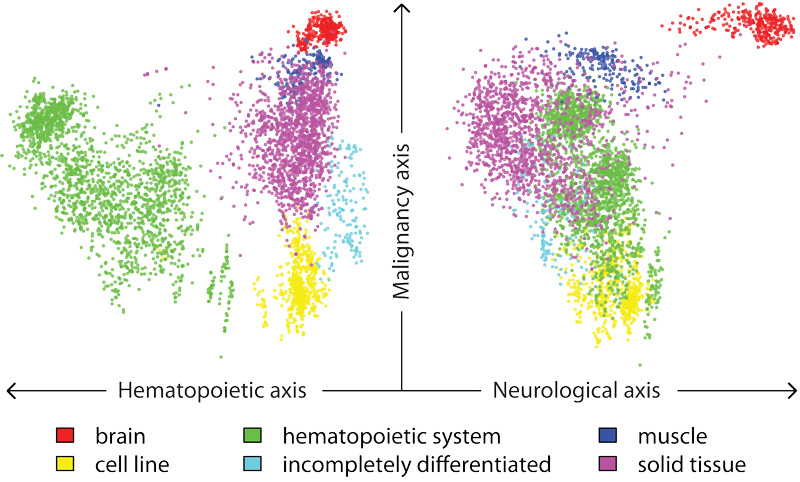EMBL-EBI Press Office
Wellcome Genome Campus Hinxton, Cambridgeshire CB10 1SD, UK
media@ebi.ac.uk+44 1223 494369
EMBL-EBI researchers present global map of human gene expression

Just like members of an orchestra are active at different times although playing the same piece of music, every cell in our body contains the same genetic sequence but expresses this differently to give rise to cells and tissues with specialised properties.
By integrating gene expression data from an unprecedented variety of human tissue samples, Alvis Brazma and his team at the European Bioinformatics Institute, an outstation of the European Molecular Biology Laboratory (EMBL), and their collaborators have for the first time produced a global map of gene expression. The full analysis behind this unique view of the genetic activities determining our appearance, function and behaviour is published today in Nature Biotechnology.
The analysis used data collected from 163 laboratories worldwide involving 5,372 human samples from various tissues, cell types and diseases. Most transcriptomics experiments compare gene expression in only a few cell types or conditions and although technically challenging, integrating this data on a large-scale has created a new way for scientists to explore gene expression. The analysis is visualised as a map subdividing the human gene expression space into six distinct major groups or ‘continents’.
The continents emerged by grouping samples with similar gene expression signatures. This established the identity of the six groups: brain; muscle; hematopoietic (blood related); healthy and tumour solid tissues; cell lines derived from solid tissues; and partially differentiated cells. By visualising these subsets in 3D, comparisons can be made on the degree of similarity in the gene expression profiles on each grouping. For example, analysis of the continents showed that cell lines are usually more similar to each other than to their tissue of origin. A new bioinformatics service allowing anyone to explore this expression map has been developed by the European Bioinformatics Institute as part of the ArrayExpress Gene Expression Atlas resource (www.ebi.ac.uk/gxa/).